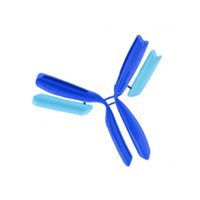IM71 Sigma-AldrichAnti-MMP-7 (Ab-3) Mouse mAb (ID2)
This Anti-MMP-7 (Ab-3) Mouse mAb (ID2) is validated for use in Affinity Purification, Immunoblotting, Immunofluorescence, Paraffin Sections for the detection of MMP-7 (Ab-3).
More>> This Anti-MMP-7 (Ab-3) Mouse mAb (ID2) is validated for use in Affinity Purification, Immunoblotting, Immunofluorescence, Paraffin Sections for the detection of MMP-7 (Ab-3). Less<<Synonyms: Anti-PUMP-1, Anti-Matrilysin, Anti-Matrix Metalloproteinase 7
Recommended Products
Overview
| Replacement Information |
|---|
Key Spec Table
| Species Reactivity | Host | Antibody Type |
|---|---|---|
| H | M | Monoclonal Antibody |
| Product Information | |
|---|---|
| Declaration | Not available for sale in Japan. |
| Form | Liquid |
| Formulation | In 10 mM PBS, pH 7.4. |
| Positive control | Conditioned, serum-free medium from SW620 cells or bladder, breast, or ovarian carcinoma |
| Preservative | None |
| Quality Level | MQ100 |
| Physicochemical Information |
|---|
| Dimensions |
|---|
| Materials Information |
|---|
| Toxicological Information |
|---|
| Safety Information according to GHS |
|---|
| Safety Information |
|---|
| Product Usage Statements |
|---|
| Packaging Information |
|---|
| Transport Information |
|---|
| Supplemental Information |
|---|
| Specifications |
|---|
| Global Trade Item Number | |
|---|---|
| Catalogue Number | GTIN |
| IM71 | 0 |
Documentation
Anti-MMP-7 (Ab-3) Mouse mAb (ID2) Certificates of Analysis
| Title | Lot Number |
|---|---|
| IM71 |
References
| Reference overview |
|---|
| Brunner, K.L, et al. 1995. Proc. Natl. Acad. Sci. USA 92, 7362. Imai, K., et al. 1995. J. Biol. Chem. 270, 6691. Lichtinghagen, R., et al. 1995. Eur. J. Clin. Chem. Clin. Biochem. 33, 65. Nakano, A., et al. 1995. J. Neurosurg. 83, 298. Woessner, J.F., Jr., 1995. Meth. Enzymol. 248, 485. Yamamoto, H., et al. 1995. J. Clin. Lab. Anal. 9, 297. Gaire, M., et al. 1994. J. Biol. Chem. 269, 2032. McDonnell, S., et al. 1994. Biochem. Soc. Trans. 22, 58. Cottam, D.W. and Rees, R.C. 1993. Intl. J. Oncol. 2, 861. Stetler-Stevenson, W.G. 1993. FASEB J. 7, 1434. Woessner, J.F. 1991. FASEB J. 5, 2145. Liotta, L.A. and Stetler-Stevenson, W.G. 1990. in Seminars in Cancer Biology, ed. M.M. Gottesman. Vol. 1, 99. Sellers, A. and Woessner, J.F., Jr. 1980. Biochem. J. 189, 521. |







